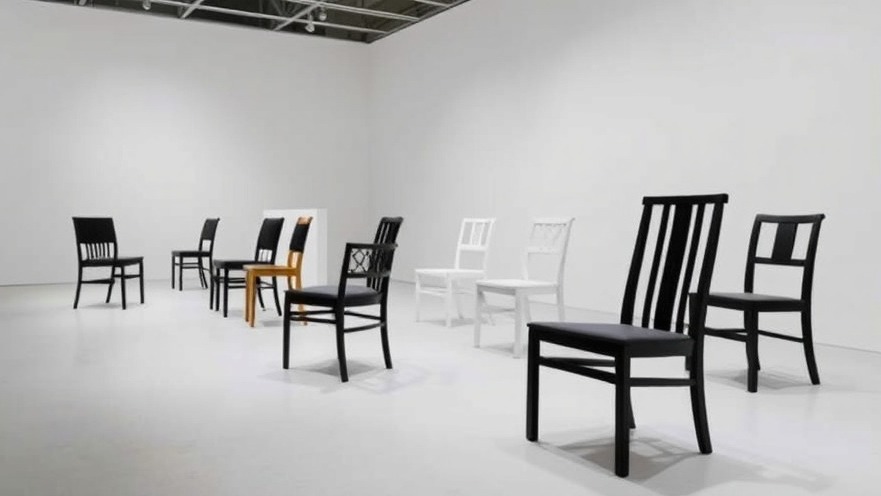
Marina Abramović Transcends Design with 'Elephant in the Room'
Renowned Serbian performance artist Marina Abramović has ventured into the world of furniture design with her captivating "Elephant in the Room" chair collection. Collaborating with the innovative Mexican design studio, La Metropolitana, this collection debuted amid the vibrant Mexico City Art Week, highlighting the intersection of utility, art, and ethical expression.
Celebrating Cultural Heritage Through Furniture
Showcased in a repurposed factory space, the exhibition featured a selection of meticulously crafted chairs made primarily from Rosa Morada and Cocobolo wood, infused with copper elements derived from recycled materials. This initiative not only emphasizes sustainability but also serves as a poignant reminder of environmental issues concerning the exploitation of rare resources. The piece's design incorporates traditional joinery techniques, honoring craftsmanship in an age of mass production. Abramović’s deep commitment to both art and environmental ethics shines through every detail of this collection, making each chair not just a seat, but a story of resilience and artistry.
A Performance of Purpose
Abramović included a performance during the exhibition where she interacted with the chairs, thereby transforming them from mere objects into conduits of emotion and energy. As she stated, "Objects can transcend utility to become conveyors of energy and creators of emotional links." This sentiment underlines her belief that designed objects foster connections between users and their environment, promoting a sense of mindfulness in everyday interactions. It reflects her larger artistic vision — that art and design can provoke thought and inspire change.
Designing for Digital Nomads and Remote Workspaces
For today’s digital nomads, comfortable and functional workspaces are paramount. The Elephant in the Room collection, with its carefully designed ergonomic forms, answers this need while reflecting a deeper philosophical perspective on furniture. The chairs’ variances — one designed as a high-backed version for solitary contemplation and another with a welcoming armrest — cater to different work styles and environments. This flexibility suits both home offices and co-working spaces, encouraging productivity in aesthetically pleasing settings.
Ethical Considerations in Modern Design
A significant theme embedded in Abramović's collection is the ethical consideration surrounding the materials used. The woods selected for crafting the chairs were sourced, when possible, from government seizures of illegal pieces, illustrating a commitment to using what would otherwise go to waste. This transparency in sourcing promotes awareness about sustainable practices in design, urging consumers and creators alike to acknowledge the consequences of their choices. In a marketplace increasingly influenced by eco-consciousness, such initiatives speak volumes about a brand's values and vision.
The Bigger Picture: Cultural Trends in Mexico City
Mexico City Art Week has become a notable platform for showcasing the myriad ways in which contemporary art merges with society, culture, and design. With over 90 venues participating this year, the event transcended traditional perceptions, allowing local artists and designers to broadcast their narratives to a global audience. The Elephant in the Room chairs caught the eye this year, illustrating how design can articulate complex social themes while catering to modern needs.
Conclusion: More Than Just Chairs
The Elephant in the Room chair collection epitomizes how design can reflect cultural, ethical, and emotional dimensions. Marina Abramović’s foray into furniture design not only highlights the necessity of creating comfortable workspaces for the digital nomad but also invites a broader conversation about the role of art in everyday life. By marrying functionality with philosophical inquiry, this collection serves as a poignant reminder that every object we interact with has the potential to inspire, provoke thought, and connect us to the larger tapestry of human experience.
 Add Row
Add Row  Add
Add 




Write A Comment